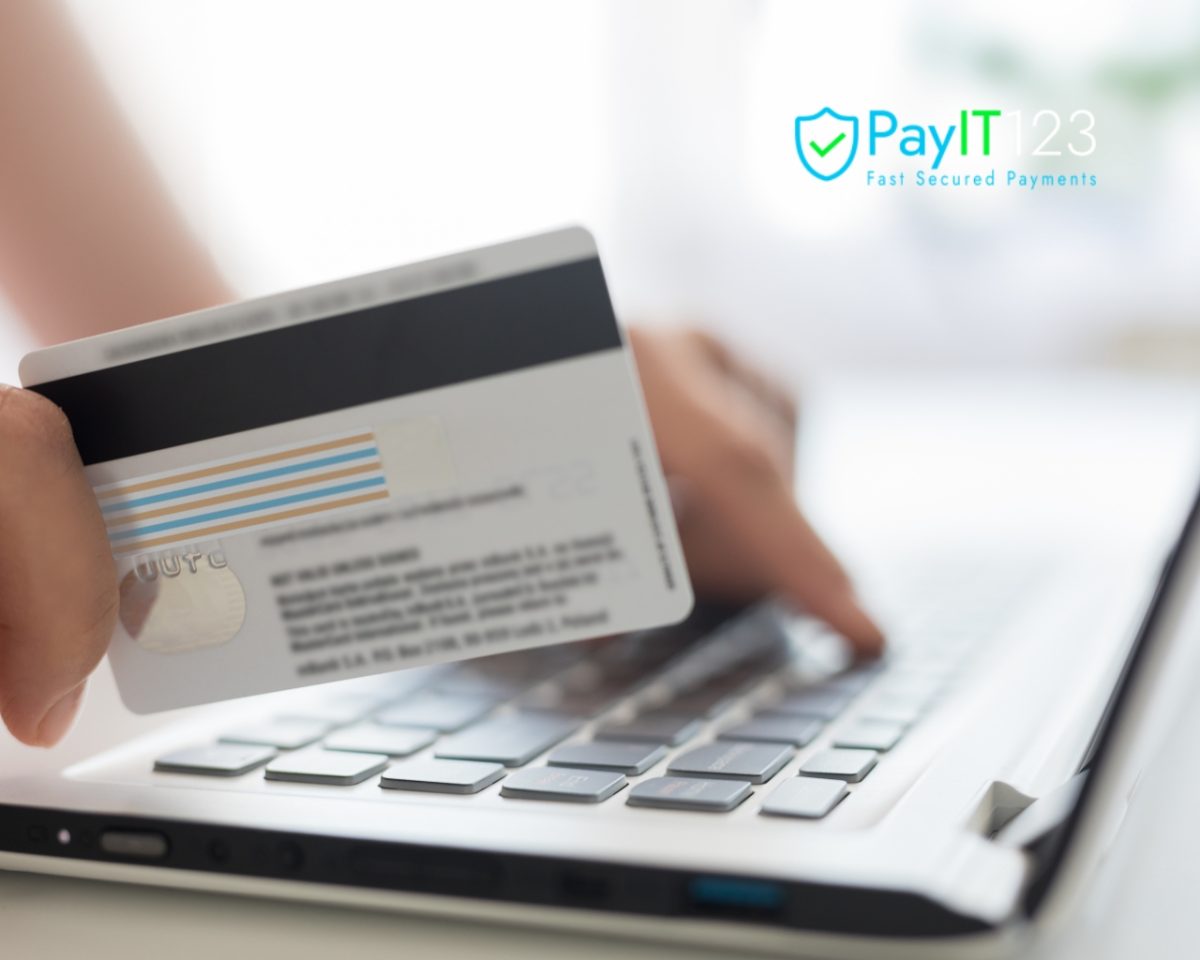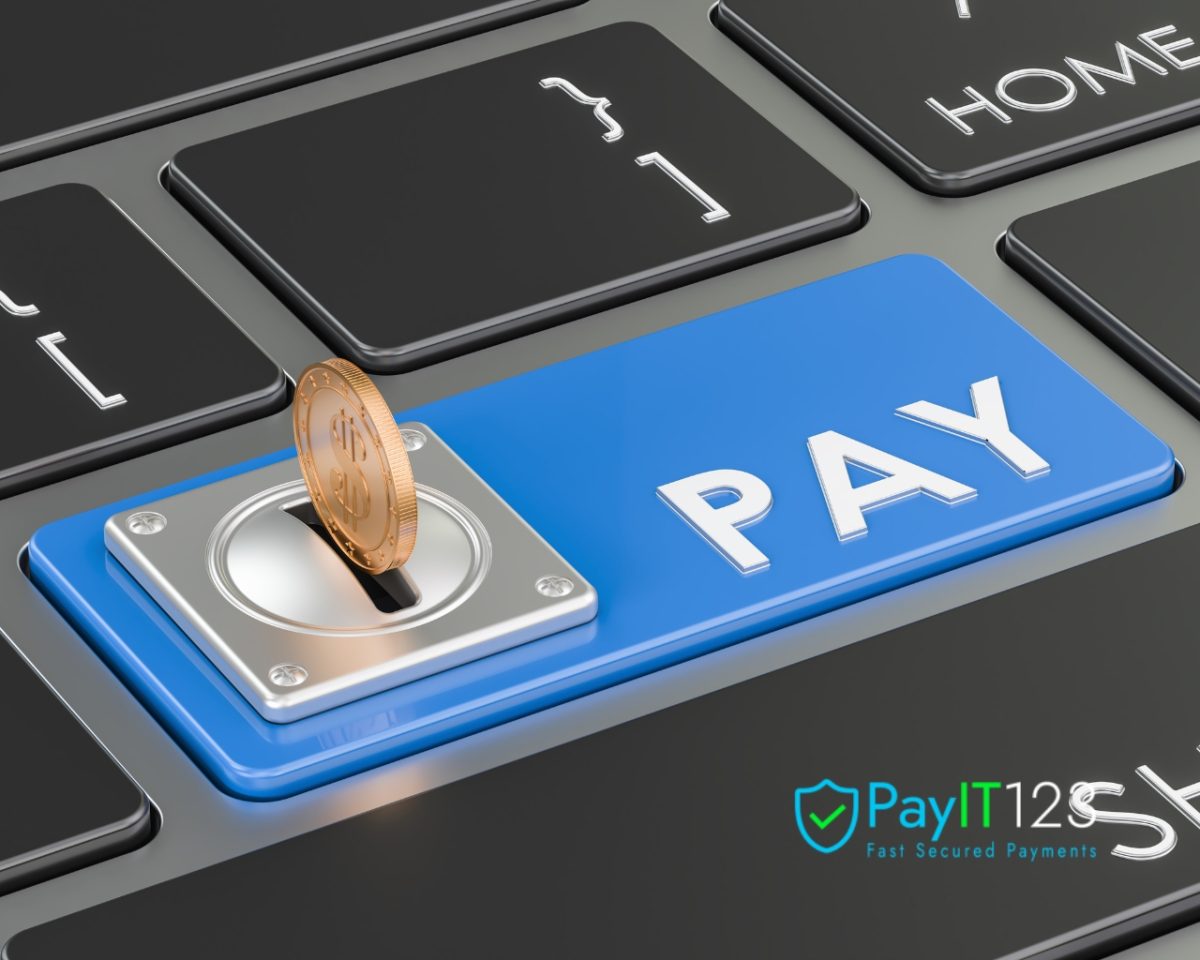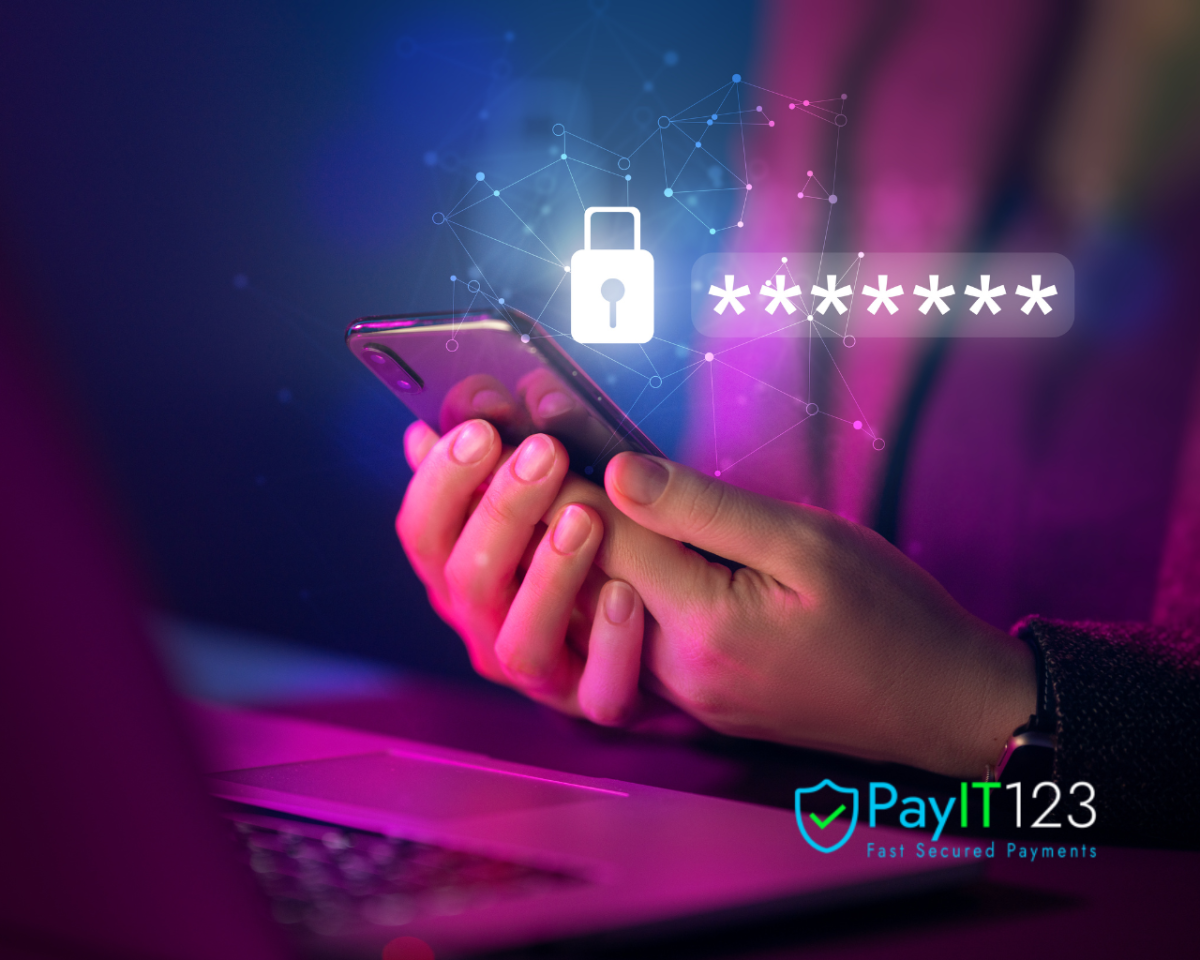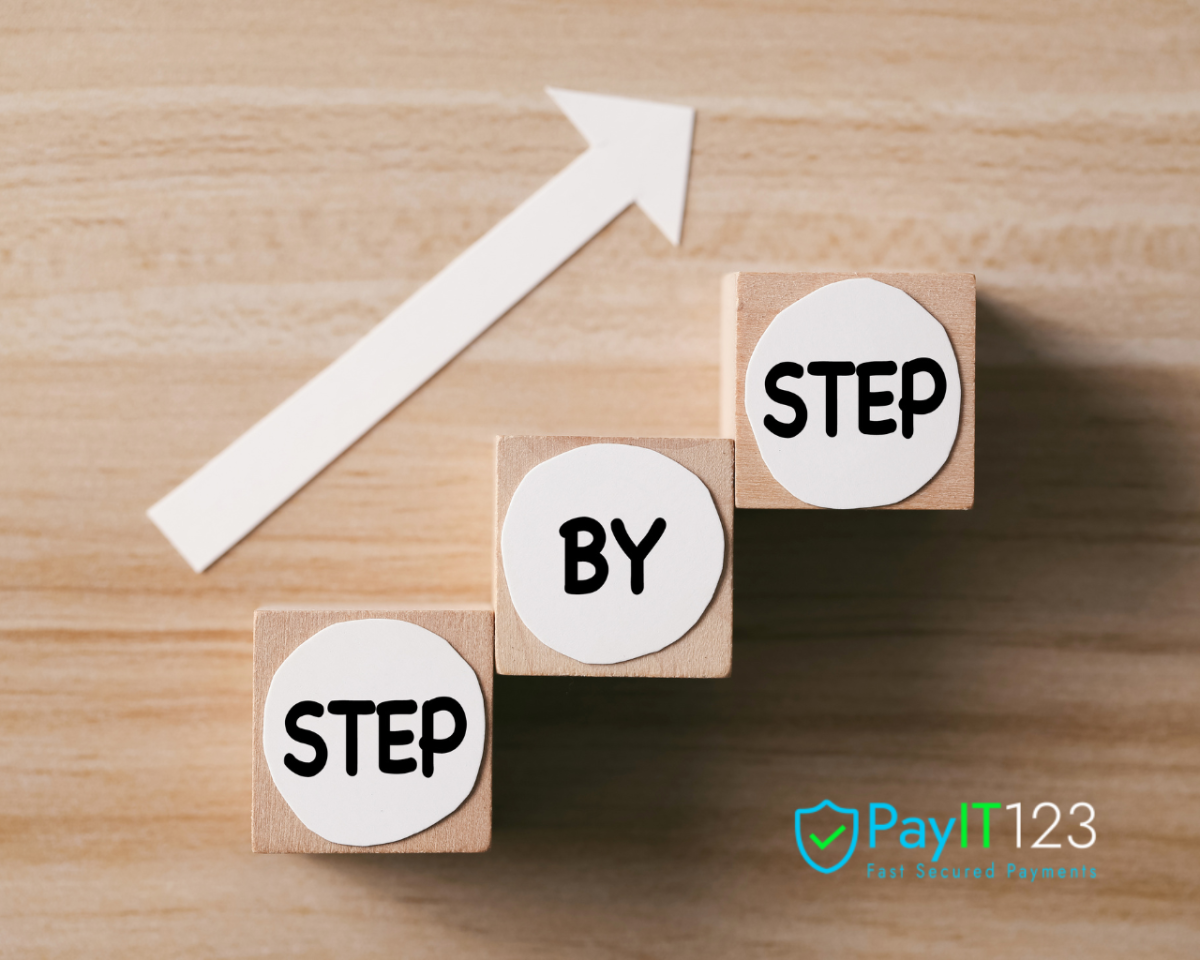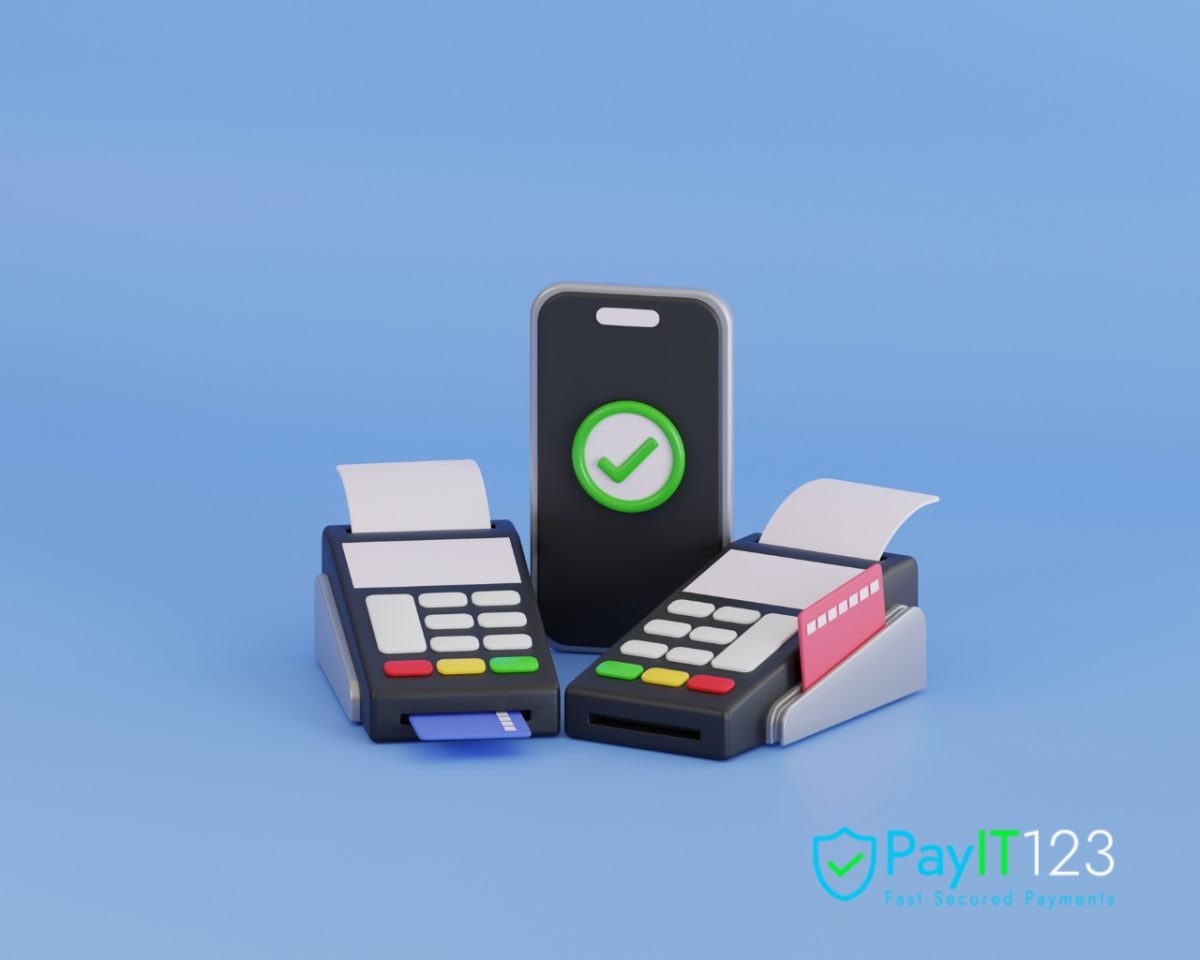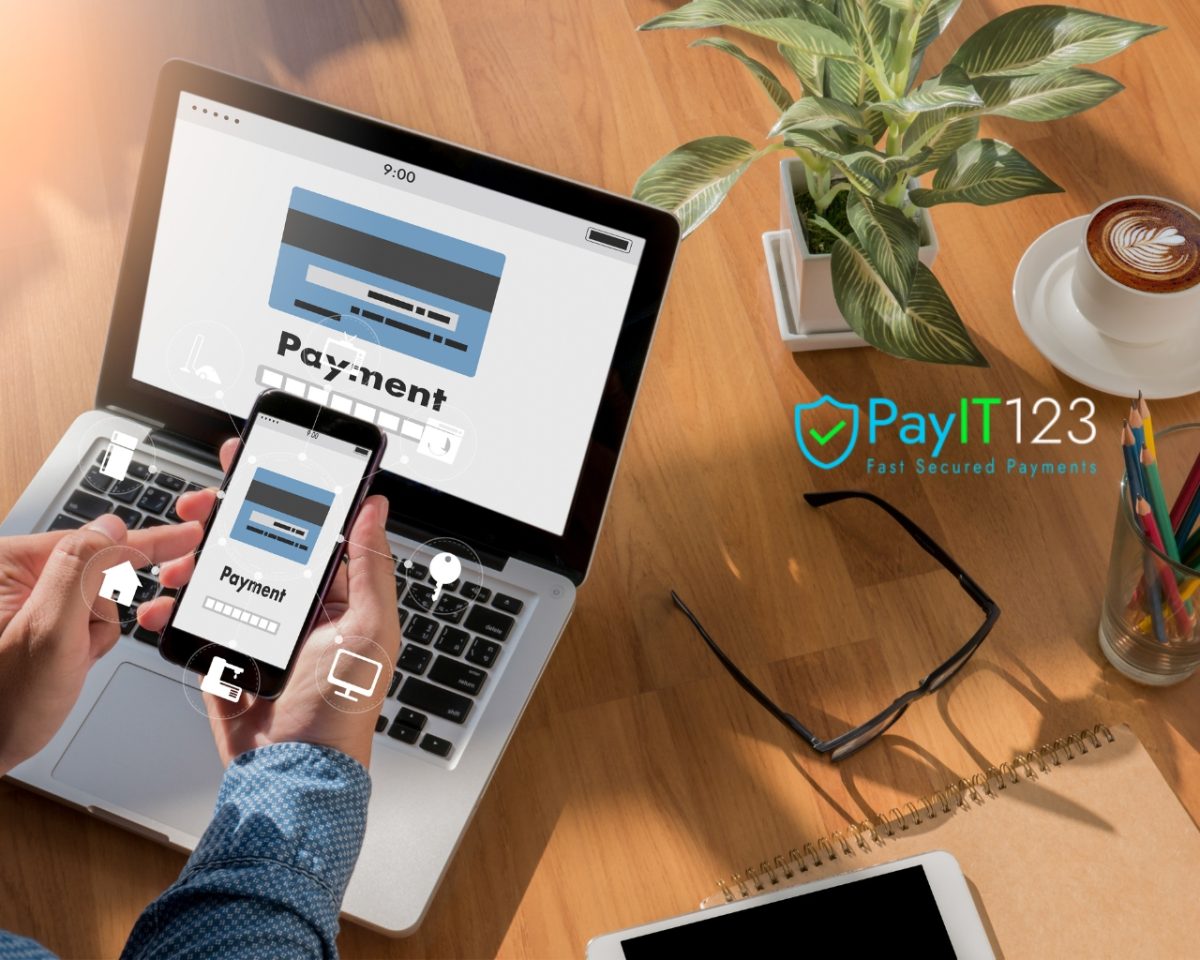Introduction
Payment links have revolutionized transactions across industries, streamlining processes, enhancing customer experience, and improving operational efficiencies. This blog explores successful case studies, showcasing their versatility and effectiveness.
1. Retail Industry: Expanding E-commerce Capabilities
Company: TrendyThreads
● Challenge: TrendyThreads, a mid-sized online clothing retailer, faced significant cart abandonment rates due to a cumbersome checkout process.
● Solution: The company implemented payment links to simplify the checkout process. By sending direct payment links through emails and SMS following cart abandonment, customers could complete their purchases with just one click.
● Outcome: TrendyThreads saw a 25% reduction in cart abandonment and a 15% increase in overall sales. The simplified process also enhanced customer satisfaction ratings.
2. Freelance Services: Streamlining Client Transactions
Freelancer: David Chen, Graphic Designer
● Challenge: David struggled with delayed payments and inefficient billing processes that consumed much of his time.
● Solution: He began using payment links through a popular invoicing software, allowing him to send quick and secure payment requests along with his project deliverables.
● Outcome: David experienced a decrease in payment delays, with over 90% of his invoices being settled within a week of project completion. This efficiency allowed him more time to focus on creative work and client acquisition.
3. Non-Profit Organizations: Facilitating Donations
Organization: GreenEarth Foundation
● Challenge: GreenEarth needed a hassle-free method to accept donations, especially during events and campaigns.
● Solution: They incorporated payment links into their digital marketing materials, including emails, social media posts, and their website. They also used QR codes linked to payment pages during live events.
● Outcome: Donation processing became faster and more convenient, resulting in a 40% increase in the number of donations received during campaigns. The organization also noted an improvement in donor satisfaction and engagement.
4. Hospitality Industry: Enhancing Guest Experiences
Company: StayLux Hotels & Resorts
● Challenge: StayLux wanted to provide a seamless booking and payment experience for international guests, who often faced difficulties with traditional payment gateways.
● Solution: The hotel group implemented payment links that could be sent via email once a reservation was made. These links support multiple currencies and payment methods.
● Outcome: StayLux observed a significant improvement in guest satisfaction scores, and the streamlined process reduced the administrative workload for staff. Additionally, international bookings increased by 20%.
5. Education Sector: Simplifying Course Payments
Institution: Metro City Language School
● Challenge: The school needed a better system to handle course fees from a growing international student base.
● Solution: Metro City Language School started sending payment links to students upon registration, which supported various local and international payment methods.
● Outcome: The school saw an increase in early registrations due to the ease of payment, with a 30% uplift in enrolled students from abroad. The administrative staff also reported a reduction in billing-related queries.
Conclusion
Payment links are transforming various industries by improving business transactions, enhancing the customer experience, and boosting sales and efficiency. As digital transactions evolve, they provide a secure, customer-friendly solution.
#PaymentLinks #DigitalPayments #FintechInnovation #CaseStudies #RetailInnovation #FreelanceEconomy #NonProfitFundraising #HospitalityIndustry #EducationTechnology #BusinessSolutions
Category: Technology
Automating Billing with Payment Links: Tools and Techniques
Introduction
This blog discusses the benefits of automating billing processes using payment links in the digital economy, enhancing customer satisfaction, and streamlining business operations, highlighting various tools and techniques for this process.
Benefits of Automating Billing with Payment Links
1. Streamlined Transactions:
Payment links provide a direct route to payment that simplifies the customer experience. They eliminate the need to manually create and send invoices, thus speeding up the payment process.
2. Reduced Administrative Overhead:
Automating billing with payment links cuts down on administrative tasks such as tracking unpaid invoices and following up with clients, allowing business owners to focus more on growth and less on bureaucracy.
3. Enhanced Customer Experience:
Customers appreciate the ease and flexibility of making payments via payment links. A simplified checkout process can improve customer satisfaction and potentially increase repeat business.
4. Improved Cash Flow:
Faster payment processing directly impacts cash flow—a crucial aspect of maintaining the health of any business. Payment links can reduce the time between billing and receiving funds.
Tools for Implementing Payment Links
Several tools and platforms enable businesses to integrate payment links into their billing systems effectively:
1. PayPal:
PayPal offers the ability to create and send secure payment links through its platform. This is ideal for businesses looking for a quick setup without needing extensive integration.
2. Stripe:
Stripe provides a comprehensive suite of tools for handling online payments, including the generation of payment links. It’s suitable for businesses that require more customization and control over their payment processes.
3. Square:
Known for its POS systems, Square also offers solutions for digital payments, including the creation of payment links. This is particularly useful for businesses that operate both online and offline.
4. Payoneer:
Payoneer allows businesses to send payment requests with links directly to their customers, making it a good choice for companies with international clients.
Techniques for Maximizing Efficiency
1. Automate Payment Reminders:
Use automated systems to send reminders to customers about upcoming or overdue payments. This can help maintain a steady cash flow and reduce the need for manual follow-ups.
2. Integrate with Accounting Software:
Link your payment tools with accounting software to automatically update financial records and maintain accurate books with minimal effort.
3. Optimize for Mobile:
Ensure that your payment links and the subsequent payment gateway are optimized for mobile devices. With the increasing prevalence of mobile transactions, having a mobile-friendly payment process is essential.
4. Track and Analyze Payment Data:
Use analytics to track the effectiveness of your payment links. Analyzing data such as click-through rates and conversion rates can provide insights into customer preferences and behavior.
Conclusion
Automating billing with payment links improves operational efficiency and the customer experience. It simplifies financial transactions, reduces administrative burdens, and maintains better cash flow. As technology evolves, adapting and integrating these innovations is crucial for business success.
#PaymentLinks #FinancialAutomation #DigitalPayments #BusinessEfficiency #Ecommerce #Fintech #OnlinePayments #BillingAutomation #TechSolutions #CustomerSatisfaction
The Rise of Payment Links: Revolutionizing Digital Transactions
Introduction
Payment links revolutionize digital transactions, simplifying the process of requesting and receiving payments and offering flexibility and efficiency that traditional methods cannot match.
What are Payment Links?
Payment links are URLs sent via email, SMS, or messaging platforms to customers, directing them to secure payment pages and streamlining the process by eliminating the need for physical hardware.
Key Benefits of Payment Links
1. Ease of Use
Creating and sending a payment link is incredibly straightforward. Merchants can generate these links through their payment gateway interfaces, often with just a few clicks. The simplicity of this process opens up e-commerce to a wider array of businesses, including small enterprises and solo entrepreneurs who may not have the resources for a traditional e-commerce setup.
2. Versatility
Payment links are highly versatile and can be used across various platforms. Whether it’s through social media, email newsletters, or instant messaging apps, these links can reach customers wherever they are online. This adaptability makes payment links an ideal solution for businesses that operate remotely or have a global customer base.
3. Enhanced Security
With cyber threats on the rise, security is a major concern in online transactions. Payment links are secured by the payment gateway’s protocols, which often include encryption and compliance with international security standards like PCI DSS. This ensures that customer payment information remains protected throughout the transaction process.
4. Faster Payments
Payment links facilitate quicker payments by reducing the number of steps a customer must take to complete a transaction. By clicking on a link, the customer is taken directly to the payment page, where they can pay immediately without the hassle of entering payment details manually each time.
5. Improved Cash Flow
For businesses, faster payments mean improved cash flow. Payment links can shorten the payment collection cycle, allowing businesses to access their funds sooner. This is particularly beneficial for small to medium-sized enterprises that rely on quick cash turnover to maintain operations.
Real-World Applications
Freelancers and Consultants
Freelancers can use payment links to bill for completed work, sending invoices directly via email or text message. This method is faster and more direct than traditional invoicing, which can be cumbersome and slow.
Retail and E-Commerce
Retailers can integrate payment links into their online stores or even use them to sell through social media platforms without setting up a separate e-commerce website.
Nonprofits
Nonprofits can use payment links to simplify the donation process. A single link can be shared across multiple platforms, making it easier to reach potential donors and collect contributions.
Conclusion
Payment links are revolutionizing digital transactions, making them more accessible, secure, and efficient. As businesses and consumers adopt these methods, e-commerce will experience a smoother, faster, and more enjoyable shopping experience.
#PaymentLinks #DigitalPayments #Ecommerce #OnlineTransactions #Fintech #PaymentSolutions #BusinessEfficiency #SecurePayments #MobilePayments #DigitalCommerce
Security Measures for Safe Use of Payment Links
Introduction
This blog discusses the importance of implementing and managing essential security measures for businesses to ensure the safe use of payment links, protecting both customers and their reputations.
1. Choose a Trusted Payment Provider
The foundation of secure payment link usage begins with selecting a reputable and trusted payment provider. Research and choose a provider that complies with industry standards for security, such as PCI DSS (Payment Card Industry Data Security Standard) compliance. Popular payment providers like PayPal, Stripe, and Square have robust security measures in place to protect customer data.
2. Implement SSL Encryption
SSL encryption is crucial for safeguarding sensitive information transmitted between a customer’s browser and a website. It’s visible in URLs with “https://” and a padlock icon in the browser address bar, encrypting sensitive data like credit card details and preventing unauthorized access by third parties.
3. Utilize Tokenization
Tokenization is a security technique that replaces sensitive payment data with a unique identifier called a token. When a customer makes a payment using a payment link, their payment information is replaced with a token, which is stored securely by the payment provider. This reduces the risk of exposing sensitive data in the event of a data breach.
4. Enable Two-Factor Authentication (2FA)
Two-factor authentication adds an extra layer of security by requiring users to provide two forms of identification before accessing their accounts or completing a transaction. Implement 2FA for accessing your payment provider account and encourage customers to enable 2FA for added protection against unauthorized access.
5. Regularly Update Software and Systems
Keep your website platform, payment processing software, and any related systems up to date with the latest security patches and updates. Software updates often include fixes for known vulnerabilities that could be exploited by cyber attackers. Regularly check for updates and apply them promptly to minimize security risks.
6. Monitor for Suspicious Activity
Monitor your payment processing activity for any signs of suspicious or unusual behavior. Look out for unexpected spikes in transaction volume, repeated failed transactions, or unusual login attempts. Implement automated monitoring tools that can detect and alert you to potential security threats in real time.
7. Educate Employees and Customers
Provide training and education to your employees on security best practices, including how to recognize phishing attempts, avoid clicking on suspicious links, and handle sensitive customer data securely. Additionally, educate your customers on how to identify secure payment links and recognize potential scams or fraudulent activity.
8. Regular Security Audits and Assessments
Conduct regular security audits and assessments of your payment processing systems to identify any vulnerabilities or weaknesses. Engage with third-party security experts to perform penetration testing and vulnerability assessments to ensure that your systems are secure from potential threats.
Conclusion
To ensure secure payment links, businesses should adopt a proactive approach to security, involving technical measures and employee awareness. This will protect customer data, prevent cyber threats, and build trust. Prioritizing security at every step ensures a seamless payment experience.
#PaymentSecurity #Cybersecurity #OnlinePayments #SecureTransactions #DataProtection #PaymentProcessing #BusinessSecurity #FraudPrevention #CustomerTrust #PaymentLinks
Integrating Payment Links into E-Commerce: A Step-by-Step Guide
Introduction
This guide outlines the process of integrating payment links into an e-commerce platform, aiming to streamline the online payment process, improve the customer experience, and boost sales.
Step 1: Choose a Payment Link Provider
The first step is to select a payment link provider that aligns with your business’s needs. Consider factors such as transaction fees, supported payment methods, security features, and ease of integration. Popular payment link providers include PayPal, Stripe, Square, and Payoneer.
Step 2: Set Up Your Account
Once you’ve chosen a payment link provider, you’ll need to set up an account. This typically involves providing basic information about your business, such as your name, address, and bank account details. Some providers may also require additional documentation for verification purposes.
Step 3: Generate Payment Links
After setting up your account, you can start generating payment links. Most payment link providers offer a dashboard or interface where you can create and customize links. Specify details such as the amount to be charged, the description of the product or service, and any other relevant information.
Step 4: Embed Payment Links on Your Website
To integrate payment links into your e-commerce platform, you’ll need to embed them into your website or online store. This can typically be done by adding a “Buy Now” or “Pay Now” button to your product pages or checkout process. Most payment link providers offer code snippets or plugins that make this process straightforward.
Step 5: Test the Payment Process
Before going live with your payment links, it’s essential to test the payment process to ensure everything is working correctly. Place test orders using different payment methods to verify that payments are processed successfully and that customers receive confirmation emails or receipts.
Step 6: Implement Security Measures
Security is paramount when it comes to online payments. Make sure your website is equipped with SSL encryption to protect customer data during transactions. Additionally, choose a payment link provider that complies with industry standards for security, such as PCI DSS compliance.
Step 7: Monitor and Optimize Performance
Once your payment links are live, monitor their performance regularly to identify any issues or areas for improvement. Track metrics such as conversion rates, average order value, and customer feedback. Use this data to optimize your payment process and make adjustments as needed.
Step 8: Provide Support and Assistance
Finally, be prepared to provide support and assistance to customers who may have questions or encounter issues with the payment process. Offer multiple channels for customer support, such as email, live chat, or phone, and ensure that your support team is well-trained and responsive.
Conclusion
Integrating payment links into your e-commerce platform can streamline customer transactions and improve shopping experiences. By choosing the right payment link provider and prioritizing security and customer satisfaction, you can drive sales growth and achieve e-commerce success.
#PaymentLinks #EcommerceIntegration #OnlinePayments #DigitalCommerce #PaymentProcessing #BusinessTips #Fintech #SecureTransactions #CustomerExperience #SmallBusiness
How to Set Up and Use Payment Links for Your Small Business
Introduction
This blog guides setting up and using payment links for small businesses, emphasizing their importance in the digital age for efficient transactions and an enhanced customer experience.
Setting Up Payment Links
1. Choose a Payment Processor
The first step is selecting a payment processing provider. Look for platforms like PayPal, Stripe, or Square, which offer robust security, are well-recognized, and support various payment methods (credit cards, bank transfers, and digital wallets). Consider factors such as transaction fees, ease of integration, and customer service when choosing your provider.
2. Create an Account
Once you’ve chosen a processor, set up your merchant account. This process typically involves providing your business details, bank account information, and possibly some documentation related to your business for verification purposes.
3. Generate Payment Links
With your account set up, you can start generating payment links. Most platforms have a dashboard where you can create and manage these links. You’ll need to specify the amount to be charged and you can often add a description of the product or service the link is for. Some systems also allow you to customize the payment page to match your business branding.
Using Payment Links Effectively
1. Distribute Links Through Various Channels
Maximize the reach of your payment links by distributing them through multiple channels. You can:
● Email: Send links directly to customers following a service consultation or as part of an invoice.
● SMS: A quick text message can be an effective way to send a payment link, especially for on-the-go transactions.
● Social Media: Share payment links in posts or through direct messages to facilitate easy purchases for your followers.
● QR Codes: Generate QR codes that link to your payment URL and display them in physical locations or print materials.
2. Monitor Transactions
Use the analytics tools provided by your payment processor to track the success of your payment links. Monitoring these metrics will help you understand customer preferences and tailor your services accordingly.
3. Ensure Security
Always reassure your customers that their transactions are secure. Use payment processors that comply with PCI DSS standards and communicate this to your customers to build trust.
4. Provide Excellent Customer Service
Be ready to assist customers who have questions about using payment links or encounter issues. Quick and helpful customer service can convert a frustrated customer into a satisfied one.
5. Regularly Update Payment Requests
Keep your payment requests updated and cancel any old links that are no longer needed. This helps in maintaining a professional image and avoiding confusion for customers.
Conclusion
Payment links are a cost-effective solution for small businesses to manage transactions without significant technology investment. They can streamline sales processes, improve customer satisfaction, and potentially boost revenue. However, with proper strategy and security focus, they can significantly enhance digital transaction capabilities.
#PaymentLinks #SmallBusiness #DigitalPayments #OnlineBusiness #Fintech #EcommerceTips #BusinessGrowth #SecureTransactions #CustomerService #BusinessTechnology
Comparing Top Payment Link Providers: Features and Fees
Introduction
In the rapidly evolving landscape of digital payments, businesses have an array of options when it comes to accepting payments online. Payment link providers offer a convenient solution for businesses of all sizes to collect payments without the need for a full-fledged e-commerce setup. In this blog, we’ll compare some of the top payment link providers, examining their features, fees, and suitability for different business needs.
1. PayPal
Features:
● Widely recognized and trusted payment processor.
● Create payment links directly from your PayPal account.
● Customize links with specific amounts, descriptions, and logos.
● Option to embed payment buttons on your website or email invoices.
Fees:
● Transaction fees vary by country but typically range from 2.9% to USD 0.30 per transaction for domestic payments.
● Additional fees apply for international transactions and currency conversions.
2. Stripe
Features:
● A robust payment platform with extensive developer tools.
● Generate payment links directly from the Stripe Dashboard or via the API.
● Customize links with product details, amounts, and metadata.
● It supports a wide range of payment methods, including credit/debit cards, digital wallets, and ACH transfers.
Fees:
● Transaction fees start at 2.9% plus USD 0.30 per successful transaction.
● Additional fees may apply for international cards and currency conversions.
3. Square
Features:
● All-in-one payment solution with hardware and software options.
● Generate payment links through the Square Dashboard or Point of Sale app.
● Customize links with item details, amounts, and notes.
● Supports contactless payments, chip cards, and magstripe cards.
Fees:
● Transaction fees start at 2.6% plus USD 0.10 per transaction for in-person payments.
● Online transaction fees are 2.9% plus USD 0.30 per transaction.
● There are no monthly fees or long-term contracts.
4. Payoneer
Features:
● A global payment platform with multi-currency support.
● Create payment links directly from the Payoneer dashboard.
● Customize links with invoice details, payment amounts, and due dates.
● Ideal for freelancers and businesses with international clients.
Fees:
● Transaction fees vary depending on the payment method and currency.
● Fees may include a percentage of the transaction amount plus a fixed fee.
5. QuickBooks Payments
Features:
● Payment processing integrated with accounting software.
● Generate payment links directly from QuickBooks Online or QuickBooks Desktop.
● Customize links with invoice details and payment amounts.
● Automatic reconciliation of payments with accounting records.
Fees:
● Transaction fees start at 2.9% plus USD 0.25 per transaction for card payments.
● ACH bank transfer fees are lower, starting at 1% per transaction.
Conclusion
Choosing the right payment link provider depends on your specific business needs, preferences, and budget. While all the providers mentioned above offer similar core features, there are differences in transaction fees, customization options, and additional services. It’s essential to carefully evaluate each provider’s offerings and compare them against your business requirements before making a decision. By selecting the right payment link provider, you can streamline your payment collection process, improve cash flow, and provide a seamless experience for your customers.
#PaymentLinks #PaymentProviders #DigitalPayments #Ecommerce #SmallBusiness #Fintech #OnlinePayments #BusinessTools #PaymentProcessing #Comparison
Understanding Different Payment Card Processing Fees and How to Minimize Them
Introduction:
This blog post explores the various types of payment card processing fees, their influence, and practical tips for businesses to minimize them, aiming to maximize profits and optimize financial operations, ultimately improving their bottom line.
Types of Payment Card Processing Fees:
1. Interchange Fees: Interchange fees are charged by card networks like Visa, Mastercard, and Discover for processing card transactions. These fees are typically set as a percentage of the transaction amount plus a flat fee per transaction. The exact interchange rate varies depending on factors such as the type of card used (debit, credit, or rewards), the merchant’s industry, and the transaction’s risk level.
2. Assessment Fees: Assessment fees are charged by card networks for the use of their payment infrastructure and brand. These fees are typically a small percentage of the transaction amount and are passed on to the payment processor, who then passes them on to the merchant. Assessment fees are non-negotiable and are set by the card networks themselves.
3. Processor Markup: Payment processors charge markup fees for card transactions, varying between processors. Businesses must understand their pricing structure and negotiate competitive rates to minimize these fees.
Factors Influencing Payment Card Processing Fees:
1. Transaction Volume: Businesses that process a higher volume of card transactions may be able to negotiate lower interchange rates and processor markup fees with their payment processor. Conversely, businesses with lower transaction volumes may incur higher fees.
2. Merchant Category: Certain industries are considered higher risk by card networks, leading to higher interchange rates and assessment fees. Understanding your merchant category code (MCC) and how it impacts your fees can help businesses identify potential cost-saving opportunities.
3. Card Type: Different types of cards, such as debit cards, credit cards, and rewards cards, incur varying interchange rates. Encouraging the use of lower-cost payment methods, such as debit cards, can help businesses minimize interchange fees.
4. Payment Processing Method: The method used to process card transactions, such as in-person, online, or mobile, can also impact processing fees. Some payment methods may incur additional fees or higher interchange rates due to increased risk or processing complexity.
How to Minimize Payment Card Processing Fees:
1. Negotiate Rates: Work with your payment processor to negotiate competitive interchange rates and processor markup fees based on your business’s transaction volume and needs. Compare rates from multiple processors to ensure you’re getting the best deal.
2. Optimize Payment Methods: Encourage the use of lower-cost payment methods, such as debit cards or ACH payments, to minimize interchange fees. Consider offering discounts or incentives for customers who use these payment methods.
3. Invest in Technology: Invest in payment processing technology and software that streamline operations and reduce processing costs. Look for solutions that offer transparent pricing, analytics, and reporting tools to help you track and manage your payment processing fees effectively.
Conclusion:
Understanding payment card processing fees is crucial for businesses to optimize their financial operations and profits. Negotiating competitive rates, optimizing payment methods, and investing in technology can reduce costs. Staying informed about industry trends and regulatory changes helps adapt strategies.
#PaymentProcessing #CreditCardFees #MerchantServices #FinancialTips #BusinessFinance #SmallBusinessAdvice #CostSavings #MoneyManagement #FinanceTips #BusinessTips #PaymentSolutions #InterchangeFees #TransactionFees #BusinessStrategy #FinancialPlanning #DigitalPayments #PaymentTechnology #FeeMinimization #Entrepreneurship
Subscription-Based Payment Solutions: Best Practices for Recurring Billing
Introduction
This blog discusses the growing popularity of subscription-based business models in the digital economy, highlighting best practices for managing recurring payments to optimize customer retention and streamline billing processes.
1. Choose the Right Payment Gateway
A robust payment gateway is essential for efficient recurring payment management, ensuring features like automated billing cycles, multiple payment methods, easy integration, and strong fraud detection.
2. Offer Multiple Payment Options
Offering diverse payment options, such as credit cards, bank transfers, digital wallets, or cryptocurrencies, can reduce subscription service churn and make subscription and renewal processes easier.
3. Transparent Communication
Transparency in subscription terms, billing cycle length, and cancellation options builds trust. Regularly inform customers about pricing changes and terms through emails or user account updates.
4. Streamline the Signup and Cancellation Processes
A user-friendly signup and cancellation process and a self-service portal can boost conversions and prevent customer frustration, ensuring smooth subscription management.
5. Implement Smart Retry Logic
Smart retry logic can help recover revenue from failed payment transactions in subscription models by retrying the card at strategic intervals and updating customer payment information.
6. Proactive Customer Support
Proactive customer support is essential, especially when dealing with payment issues. Offering timely support through multiple channels (such as live chat, email, and phone) ensures that customers can get help when they need it. This reduces the risk of cancellations due to unresolved billing issues.
7. Use Analytics to Monitor and Improve
Leverage analytics to track the performance of your subscription model. Metrics to monitor include churn rate, lifetime value (LTV), average revenue per user (ARPU), and payment decline reasons. These insights can help you refine your billing processes and customer retention strategies.
8. Offer Incentives for Longer Commitments
Incentives such as discounts or additional features can encourage subscribers to commit longer. This reduces the churn rate and increases the predictability of your revenue. Consider offering tiered pricing that rewards longer commitments with better pricing or more features.
Conclusion
Adopting best practices for subscription-based payment solutions is key to capitalizing on the benefits of this business model. By focusing on flexibility, transparency, and customer satisfaction, businesses can enhance the efficiency of their recurring billing systems and foster stronger customer loyalty.
Implementing these strategies requires careful planning and ongoing adjustments, but the rewards in customer retention and steady revenue are well worth the effort.
#SubscriptionBilling #PaymentSolutions #RecurringPayments #CustomerRetention #Fintech #PaymentGateways #BusinessGrowth #Ecommerce #DigitalEconomy #CustomerExperience
Streamlining Mobile Payments: How to Make Your Online Store Mobile-Friendly
Introduction
Mobile commerce is crucial in the digital age, with smartphones increasing usage. Optimizing online stores for mobile devices, particularly with streamlined payments, can enhance the user experience and boost sales. Strategies for mobile-friendly online stores are explored.
1. Optimize Your Website’s Mobile Design
To make your online store mobile-friendly, ensure your website is fully responsive, automatically adapting to screen sizes and resolutions. Use a mobile-first design approach, keeping the design simple with large buttons and readable fonts, and ensure navigation is easy to use on smaller screens.
2. Simplify the Checkout Process
A complex checkout process can deter customers, especially on mobile devices. To streamline the process, consider auto-filling forms, saving customer profiles, and providing a clear path from cart to confirmation.
3. Implement Multiple Payment Options
To accommodate a wider range of customers, integrate multiple payment options into your mobile design. In addition to traditional credit and debit card payments, consider including popular mobile wallets like Apple Pay, Google Wallet, and PayPal. These platforms offer a one-touch payment solution that can significantly speed up the checkout process and enhance the user experience.
4. Ensure a High Level of Security
Online shoppers, especially on mobile devices, prioritize security. Mobile sites should use strong encryption for payment information transmission, display security badges, and comply with PCI DSS standards for data protection. Regular audits ensure data safety.
5. Test and Optimize Regularly
Continuous testing and optimization of your mobile site are crucial. Use tools like Google’s Mobile-Friendly Test to analyze the usability of your site on mobile devices. Pay attention to load times, as slow websites can drive customers away. Regularly updating your mobile site based on customer feedback and analytical data is essential to keeping it relevant and user-friendly.
6. Personalize the Mobile Experience
Personalization can significantly enhance the mobile shopping experience. Use data analytics to provide personalized recommendations, offers, and content. Mobile apps can leverage user data more effectively to deliver a more tailored experience, encouraging higher engagement and repeat customers.
7. Offer Customer Support
Mobile shoppers often seek immediate assistance. Offering customer support through mobile-friendly channels such as live chat, social media, and WhatsApp can help address queries quickly and improve customer satisfaction. Ensure that these support channels are easily accessible through the mobile interface.
Conclusion
Making your online store mobile-friendly is not just about adapting to changes; it’s about taking proactive steps to enhance the customer experience and streamline the shopping process. By focusing on user-friendly design, multiple payment options, and robust security measures, you can significantly improve your mobile commerce performance and drive more sales.
#MobileCommerce #OnlineShopping #MobilePayments #EcommerceTips #UserExperience #MobileOptimization #DigitalPayments #RetailInnovation #SecureShopping #MobileFirst


